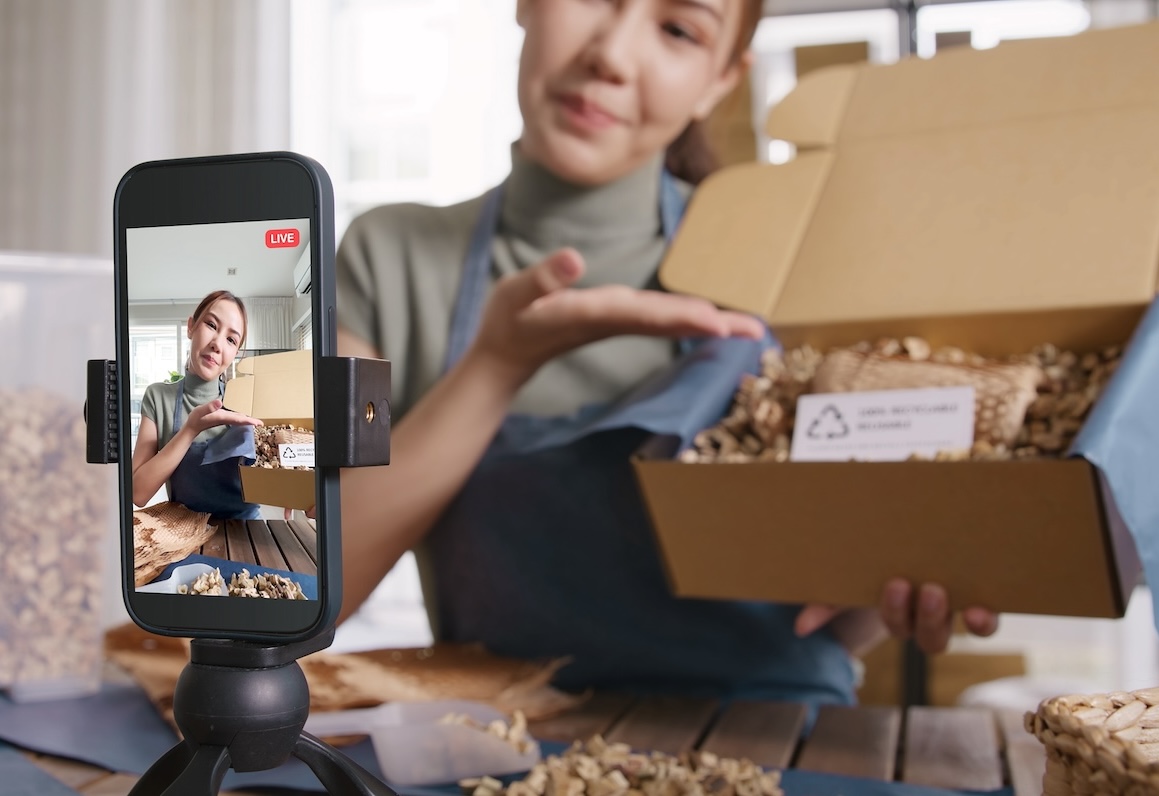The Time Is Right to Seize the Power of Content Creators
By Bill Zimmerman, APR, M.Ed.
August 2024
Influencer marketing is becoming a misnomer.
With the rise of the creator economy, brands are using influencers for so much more than marketing. Maybe “influencer communications” best fits this new world of leveraging the reach and reputation of online creators to advance multiple brand initiatives, including public relations.
According to a report from Goldman Sachs, the creator economy is projected to reach $480 billion by 2027. The 2023 report attributes that growth to brands directing more money into the space and to the advertising revenue sharing offered to creators by platforms such as YouTube and TikTok.
A survey of 1,164 consumers found that 80% of respondents reported a follow-up activity inspired by a creator’s content. Of those who were influenced, 55% reported going to a brand’s website, thanks to the creator’s efforts, according to the 2024 survey led by Keller Advisory Group.
The trends indicate that influencers will be integral pieces of future campaigns, especially those trying to reach Gen Z, the most online age cohort.
I’ll use the terms “influencer” and “content creator” interchangeably as both represent people making original content online with the intention of building audiences and benefiting some way monetarily. A report from Deloitte does draw a distinction, identifying influencers as having broader relevance and typically influencing top- or middle-funnel actions, and creators as appealing to more niche communities and mainly driving middle- to bottom-funnel activity.
The thought of an influencer evokes salesy calls to action such as “use my promo code” and “link in bio.” Still, their usefulness to communicators is evolving beyond just selling stuff. Brand’s top three primary goals for working with creators are to generate more engagement, reach new audiences and strengthen communities on social media, according to a 2022 survey of 500 U.S. marketers by Sprout Social.
Influencer marketing grows up
Working with creators is becoming more formalized, thanks to strategic thinking, greater accountability for creators and increased focus on measurement. Now, it’s not uncommon for communicators to use software to find influencers and evaluate their effectiveness based on metrics such as the average engagement rate of their posts. Engagement rate, typically calculated as the number of engagements (e.g. likes, comments, shares) divided by the number of followers, is becoming far more relevant than audience size.
In fact, data shows that creators with smaller followings are enjoying better engagement rates compared to their larger peers. Nano-influencers (10,000 or fewer followers) boast an average engagement rate of 9.3%, a figure 83.7% higher than the average engagement rate of micro-influencers (10,000–100,000 followers), according to Dash Hudson. Micro-influencers average an engagement rate of 4.9%, which is 23.5% better than what the average macro-influencer (100,000–500,000 followers) sees.
Brand/influencer relationships usually begin with a creative brief setting objectives, expectations, timelines and other pertinent details. Further, the federal government is improving its communications to influencers, choosing plain language over institutional jargon with the FTC’s “Disclosures 101 for Social Media Influencers” guide. It’s an invaluable handbook to creators and brands to ensure that consumers are treated with honesty and transparency when pitched by influencers. The main message: Influencers need to clearly mark brand collaborations as an #AD whether they’ve been paid, received a discount or were gifted a product.
Lastly, during and after a campaign, multiple methods and tools exist to measure the effectiveness of the creator’s efforts and determine future strategies. Common key performance indicators are reach, impressions, sales, web visits and earned media coverage.
Additionally, multiple forces are playing a role in further legitimizing the creator economy, which gives brands greater confidence to engage in the space:
- Annual industry honors such as the Shorty Awards and Streamy Awards
- Conventions such as VidCon and VidSummit that attract creators, fans and brands
- Entire creative agencies dedicated to connecting brands with influencers
- Greater media attention, including from websites and content creators dedicated solely to covering the creator economy
- A growing number of case studies, including from the Silver Anvils, demonstrating successful campaigns
Just at my school, Penn State, the creator economy is an element of public relations, marketing and journalism courses. Our business accelerator program is recognizing creator ventures as legitimate businesses deserving of money and mentorship.
Plus, a creator-focused student org, Reach, boasts a 400-plus-member GroupMe. This summer, I also co-led our college’s social media/content creator summer camp for high schoolers.
Influencers and communicators
The advancement of the field means PR pros should take more seats at the table in shaping an organization’s influencers strategy. Creators can be engaged in each quadrant of the P.E.S.O. model, effectively reaching stakeholders beyond consumers such as reporters, investors and employees.
Some ways that creators are being plugged into PR strategies:
- Using their creative talents for long-form brand storytelling that goes beyond the marketing of products
- Employing them as spokespeople upon the launch of a new campaign or product. (Notable creator partnerships should be announced via news release, interviews with the creator could be packaged into B-roll and creators could be tapped to write op-eds.)
- Amassing owned media assets through creators such as conducting a Q&A for a blog, interviewing them on a branded podcast and featuring their insights in an annual report
- Hosting them as speakers, panelists and guests at events such as employee retreats, shareholder meetings and conferences
- Recruiting them to lobby government officials on behalf of the organization (for example, how TikTok recently paid multiple creators to travel to Washington as lawmakers debated the app’s future in the United States.)
- Connecting them to key social impact campaigns as ambassadors, storytellers and educators. (Brands have also recognized that working with creators is an effective way to spotlight and amplify voices from misrepresented groups. Walmart launched its “Black and Unlimited” program in 2023, supplying nine creators of color each with $10,000, an equipment kit, a trip to Los Angeles and other perks.)
So much of content creators’ influence is determined by the trust they build with their audiences and the online communities they assemble. This sounds a lot like the job of those working to build mutually beneficial relationships between organizations and their publics.
PR professionals can be the key to maximizing the impact of influencer partners. These enterprising creatives can clearly do more than just offer a discount code. ϖ



